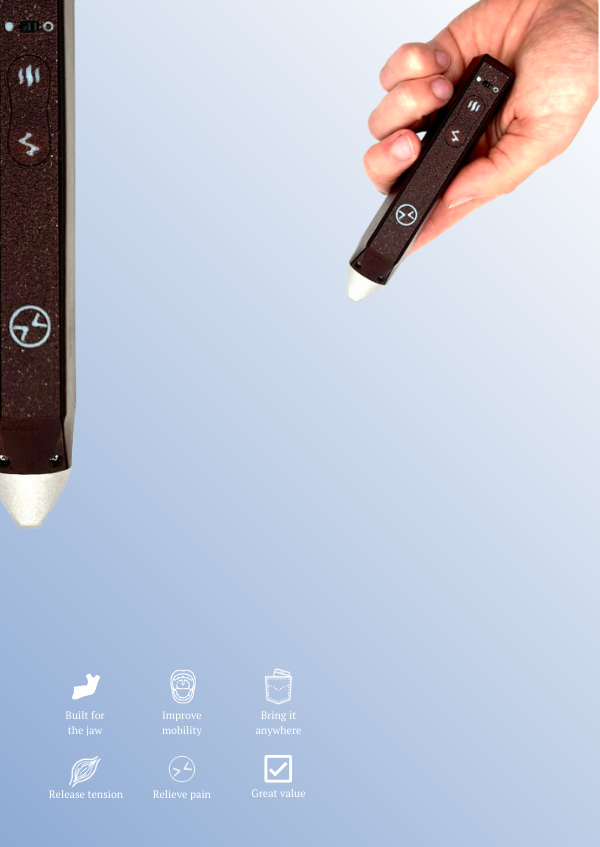Latest TMJ Research

Basically thanks to my student status at the University of Pennsylvania, I was able to attend the 9th International TMJ Interdisciplinary Research Meeting - a gathering of some of the top researchers, engineers, surgeons, dentists, and patient advocates in the TMJ field. I'm sure you won't find this surprising, but everyone fit in a fairly small lecture room (turns out the TMJ field isn't that big who knew). But luckily for me, this meant I got to talk with a lot of very great people.
A lot of what was presented was very technical in biology speak. I learned a lot actually, but this isn't the best forum to talk biology. So I wanted to give some things that MIGHT be of interest to you.
-
The community is expanding: One of the most powerful things I took away here was the fact that TMJ is no longer completely overlooked. Yes of course we're still a long way off from every dentist and orthodontist having an understanding of the TMJ when messing around with your bite. But there is now some serious money being thrown at TMJ research in a few places around the world. There was a sense of "clout" when it comes to the field, which is the most important thing when you want the best scientists working on something. Dental schools are officially teaching about the TMJ, so the next generation of dentists will be much more pleasant to deal with.
-
Right now, we're at the stage of trying to MODEL the joint. A ton of the research was about modeling the nervous structure and vascularity within the joint. We're trying to figure out = questions like "Why does joint degeneration not necessarily equate to higher levels of pain?" Pain is a tricky thing to figure out in such a complex joint.
-
What does far future treatments look like? Since most end stage TMJ problems have to do with articular disc degeneration (and the articular disc is really bad at repairing itself since it's not vascularized and a bunch of other sciencey reasons) a lot of the research was focused on that. In the future, instead of joint replacement, we might be looking at an injection of a hydrogel containing processed tissue that will form with the fibrocartilage of the damaged disc and help it regain form.
-
Tons of emphasis on the biomechanics of the joint, especially once degeneration or disc displacement begins. There's so much nuance, and so much impact from these forces. It's interesting how Splints and Nightguards are all "intuitively" prescribed, because it's so clear that the biomechanics are not understood by researchers, LET ALONE the dentists that prescribe them. In theory bite repositioning is definitely a good treatment. But the reason there's so much failure is because no one really understands their mechanisms.
-
Regarding total joint replacement, one of the biggest problems that causes failure is Heterotopic Ossification (HO). This happens even at higher rates in the jaw compared to other joint replacements for some reason. There was a really interesting keynote by the man who developed the first FDA approved drug for HO in a genetic disease called fibrodysplasia ossificans progressiva. He was showing evidence that the drug would also work for NON genetic HO as is found in TMJ surgery. Currently no one is working on this, but the theory is laid out which is really cool, and will make TMJ replacement much safer of an option.
-
I got to see some really cool footage of arthroscopies by a surgeon from London. If you want an explanation of Level 1 arthroscopy, here's a good article (https://mytmjrelief.com/blogs/mytmj-blog/everything-you-need-to-know-arthroscopy-and-arthrocentesis-surgeries-for-tmd). But he also described his level 2 and 3 arthroscopies which are a lot more rare to find. As the surgery becomes more common around the world, It'll probably become the standard intervention soon after non-surgical options fail (potentially even before trying splint therapy).
-
There was a really inspiring talk by a radiologist who wrote the textbook on TMJ Imaging (lots about taking a holistic view and really seeing the people behind the scans and research). The most important takeaway though is that the condyle is extremely good at remodeling. However the remodeling will have cascading effects to your bite all the way down to your body's posture. And the effects get A LOT worse if the remodeling happens when you're a kid. The crazy thing is that this degenrative osteoarthritis is so common in teenagers (especially girls). So if not understood by orthodontists and dentists at that time, the kid will potentially grow to have extreme bite problems, breathing problems, sleep problems, and further pain. So if you have a kid going through TMJ issues, it's important to make sure your dentist/ortho really understand how to treat around it.
There was a lot more but I can't think of it right now. Maybe I'll write a more detailed article if people are interested.
If you found this article interesting or informative, consider following us on instagram @mytmjrelief, and checking out the myTMJ Pen, a tool to work out painful muscle spasms and assist in at home PT exercises. Read some of our other blogs and check out our free TMJ exercise guides.




